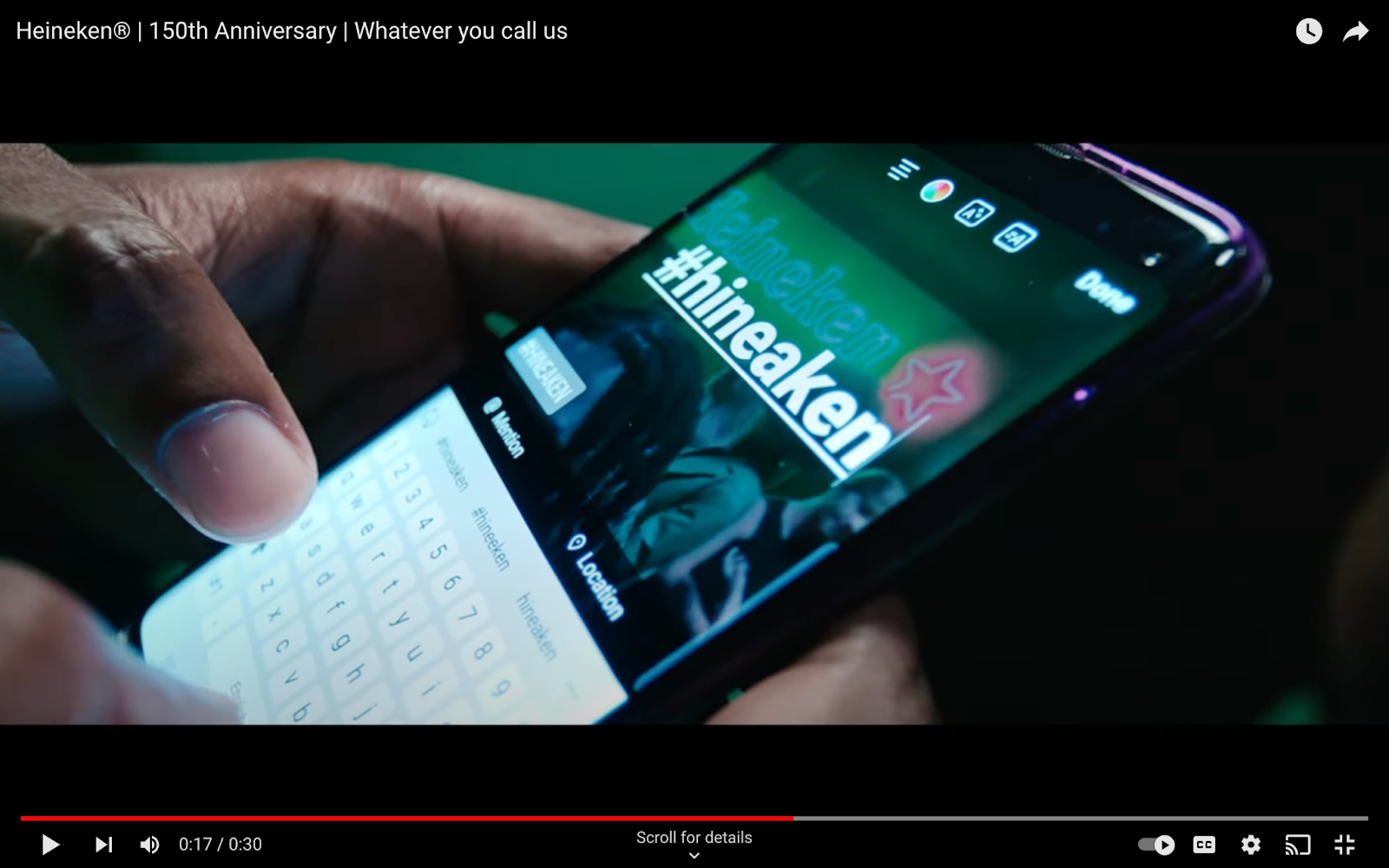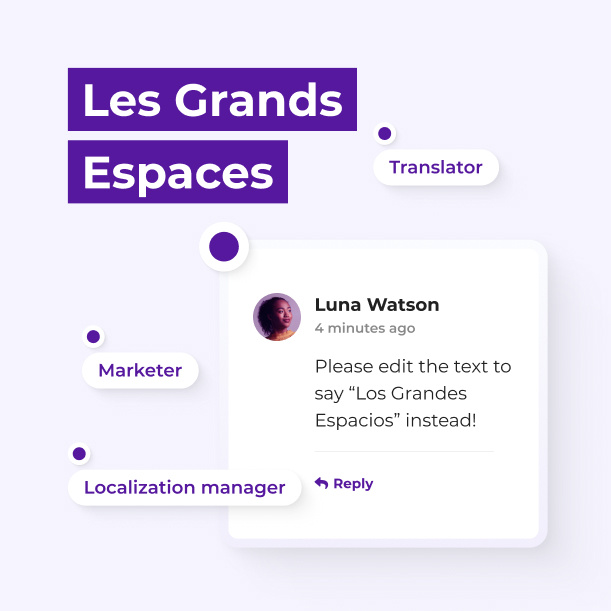Multimedia localization is a critical component of any successful global content strategy. Localizing your website can yield impressive results—such as a 47% increase in search traffic, 70% more website visits, and 20% higher conversion rates. Additionally, adding videos to your content—such as emails—can result in 300% higher click rates.
However, effective multimedia localization extends beyond mere translation. It also requires a deep understanding of cultural nuances and the ability to adapt audio, video, and interactive content to resonate with target markets.
In this post, we’ll explore some actionable ways to use multimedia localization services to elevate your global content strategy.
The importance of multimedia localization
Multimedia localization is crucial for businesses that are looking to expand their global reach and connect with diverse audiences. Adapting images, videos, and other multimedia content to your target audience’s language and cultural context can enhance brand recognition and provide prospective customers with a consistent experience. Multimedia localization also demonstrates a commitment to understanding and meeting international customers’ needs so they perceive your brand as customer-centric, even outside your original audience.
For example, Heineken’s global multimedia localization strategy involves adapting its messaging and creative content to resonate with diverse local markets and cultures around the world, as shown in the below video.
 Heineken’s localized video campaign (Source)
Heineken’s localized video campaign (Source)
Localized multimedia content can also tap into local influencers, celebrities, or experts’ credibility and following to gain exposure and establish a more authentic connection with local audiences.
Multimedia localization is important for several industries because it allows businesses to effectively communicate with and engage customers from diverse linguistic and cultural backgrounds. Let’s look at some ways that various industries employ multimedia localization:
Ecommerce
Multimedia localization is particularly useful for ecommerce businesses, where localized apps, product descriptions, user interfaces, and promotional videos can significantly impact customers’ experiences and purchasing decisions.
E-learning
Translating and adapting e-learning courses into other languages can significantly impact learning outcomes. The reason is simple—making course materials more accessible and effective in learners’ native languages and cultural contexts improves their comprehension and retention of the material. E-learning localization ensures that content resonates with learners on a deeper level, which makes training more impactful and valuable.
Gaming
Similarly, the gaming industry can benefit from multimedia localization by ensuring that titles and promotional materials resonate with local players. This involves adapting video game content to the target audience’s language, culture, and local preferences.
Check out our ebook on AI-powered localization to find out how to balance quality assurance and costs in your localization projects.
The components of a multimedia localization process
Multimedia localization projects require a blend of linguistic skills, like translating and understanding local cultures, and technical skills, such as familiarity with multimedia file formats and video editing.
Here are some specific components that are necessary for an effective multimedia localization process:
Transcriptions and subtitles
Transcriptions and subtitles are crucial for a successful multimedia localization process. The first step in the process is to transcribe the original audio into text, which serves as a foundation for translation. Skilled linguists carefully transcribe every word, ensuring accuracy and completeness.
Translators then adapt this transcribed text into the target language, taking into account cultural nuances and linguistic differences. The resulting subtitles must match the video’s timing and length. For this reason, the process also involves making sure that subtitles are easily readable but still convey the full meaning of the original dialogue within these constraints.
The transcriptioning and subtitling process requires a delicate balance of linguistic expertise and technical know-how to create accurate subtitles that seamlessly integrate with the video and provide a high-quality viewing experience for a global audience. Smartling strikes that balance effortlessly with its professional full-service video translation, including transcription, subtitling/captioning, voiceover/narration, and dubbing.
Read more about the subtle differences between translation, interpretation, and subtitling.
Voice-overs and dubbing
Voice-overs involve recording a new audio track in the target language that plays over the original audio, while dubbing replaces the original audio entirely with a new track that matches on-screen speakers’ lip movements.
The choice between using a voice-over or dubbing depends on factors such as budget, time constraints, and the target audience’s preferences. Voice-overs are generally more cost-effective and easier to implement, but dubbing can provide a more immersive experience for viewers who prefer to hear dialogue in their own language.
Regardless of the method you choose, select voice actors carefully to match the original characters’ tone and personality. You should also balance and mix the audio to achieve professional-quality results.
Video production and editing
Producing and editing videos involves adapting graphics, images, and animations to suit the target audience’s culture. Graphics and animation localization requires a deep understanding of both the source and target cultures, as well as strong technical skills in editing images and using design software.
Don’t forget to adapt on-screen text and graphics for the target audience as well. This includes modifying colors and symbols to avoid cultural taboos or misunderstandings and ensuring that the visuals are appropriate for the target market. 
Video localization (Source)
Finally, export the localized video in the desired format, ensuring that it meets the platform or distribution channel’s technical specifications. For example, most social media platforms have guidelines and specifications for multimedia content that you’ll need to keep in mind.
Check out our detailed guide on video localization to learn more.
Script translation
You’ll also need to translate your video scripts into the target language, making sure that the translation accurately conveys the original text’s meaning and intent. To do this, skilled linguists work closely with subject matter experts to achieve culturally appropriate translations.
Linguists must consider factors such as length constraints, lip-syncing requirements, and the platform’s technical limitations. Make sure to set up a review process for translated scripts to check for accuracy, natural-sounding speech, and consistency and make any necessary revisions before finalizing your scripts.
Localization engineering
Localization engineering is the backbone of the multimedia localization process. It involves planning and executing the localization workflow and integrating all components of the process seamlessly.
Localization engineers work closely with linguists, designers, and subject matter experts to ensure that the process runs smoothly and efficiently. They must also stay up-to-date on industry best practices and emerging technologies to keep the process as efficient and effective as possible.
Implementing your multimedia localization strategy
An effective multimedia localization strategy can offer numerous benefits, unlock new opportunities, and help your business gain a competitive edge in multilingual markets.
Here’s a blueprint for implementing a successful multimedia localization strategy:
1. Decide what (and what not) to localize
Begin by evaluating your existing video content and identifying what elements you want to localize, such as text, images, audio, and user interfaces. Conduct an audit to create a complete video content inventory, consider the value that each piece adds, and keep only what most effectively supports your current goals.
Avoid localizing content that contains images or videos of people in personal or professional settings, as these could alienate your target audience. Similarly, steer clear of animations that wouldn’t function in a different language and iconography that’s not universal enough to convey your message cross-culturally.
To refine your strategy and identify potential gaps that future content could fill, determine the criteria for classifying what’s useful and what’s outdated. This will help you prioritize your efforts and ensure that your localized content remains relevant and effective.
2. Understand your audience’s cultural context
Tailoring your multimedia content to your audience’s cultural norms, language, and preferences makes them feel understood and therefore helps them connect with your brand. This builds trust and loyalty, leading to higher customer engagement.
It’s equally important to avoid cultural mishaps when entering a new market. Without proper localization, your content may inadvertently contain culturally insensitive references, gestures, or imagery that could offend or alienate your audience. Make sure to test your localized content on a sample of your target audience to ensure that it resonates as intended and does not contain any unintentional messages.
Research your target audience’s cultural norms, values, and preferences as well. These include common idioms, gestures, visual cues, and references that resonate with them. Be sure to then adapt audio and visual elements, such as voice-overs, music, and imagery, to align with their cultural context.
3. Enhance localization accuracy by working with native translators
Native-speaking translators have mastered the target language, which allows them to produce high-quality translations that read and sound like a native speaker. These translations won’t come with the awkward phrasing and errors that can occur with non-native translators. Native speakers’ linguistic expertise is also essential for seamlessly integrating multimedia elements, like lip-syncing dubbing tracks, and adhering to subtitle character limits.
To take your translations up a notch, work with native speakers who have subject matter expertise in your industry. This will enhance the accuracy of the technical terminology you use while keeping user experience in mind.
Native-speaking reviewers are also crucial for validating translated multimedia content’s accuracy, fluency, and cultural appropriateness and ensuring a polished, professional end product.
Smartling works extensively with native-speaking translators to deliver high-quality, culturally adapted translations for multimedia content, as well as other content types.
4. Prioritize terminology management
Develop comprehensive style guides and glossaries that outline your preferred terms, tone, and language usage. By predefining and managing your key terms, you can help linguists and translators work more efficiently, reducing the time and effort they spend on multimedia localization projects and accelerating your time to market.
Regularly update these linguistic assets based on feedback from users and translators, as well as industry updates, to keep your content culturally relevant and accurate.
Smartling’s translation management system (TMS), which comes equipped with translation memory, streamlines terminology management and ensures consistency across all your localized content. 
Smartling’s TMS facilitates collaboration. (Source)
5. Use the right tools for video and audio localization
Leverage specialized tools and technology to streamline your audio and video localization workflows. Many options are available, and each has its own unique features and capabilities.
To make the right choice for your business, consider the following factors:
- Collaboration features: Choose tools that offer real-time collaboration and enable team members to work together seamlessly, regardless of their location. This promotes faster turnaround times and more effective communication.
- Integrated translation tools: Select video localization tools that include built-in translation aids like translation memory, glossaries, and machine translation to assist in the localization process.
- Professional translation services: Evaluate if the tool provides access to professional human translators and voice actors to ensure high-quality localized content.
- Project management capabilities: Opt for tools that provide comprehensive project management features for organizing translation projects, including file sharing, version control, and progress tracking.
- Compatibility with your existing workflows: Be sure that the localization software integrates well with your content management systems, ecommerce platforms, and other tools to create a smoother process.
How Smartling streamlines multimedia localization
Smartling, a leader in content localization, provides innovative solutions that bring multimedia content to life across cultures. Our services ensure that every aspect, from visuals to voice-overs, resonates with target audiences, enriching the global content experience.
Our comprehensive multimedia localization services include transcription, translation, subtitling, and dubbing, all powered by advanced AI-driven technology and a network of expert linguists. This makes localizing videos, podcasts, and other multimedia assets a breeze.
Smartling’s AI-powered human translation process provides quick and accurate translations in multiple languages, striking a balance between costs, speed, and quality. To efficiently manage your entire process, you can also use our TMS as a single platform to view, manage, and track all your localization projects.
Book a meeting today to see how Smartling’s services can streamline your multimedia localization.
%20052925%20-%20AI%20Translation%20101%20(1).png)
.jpg)